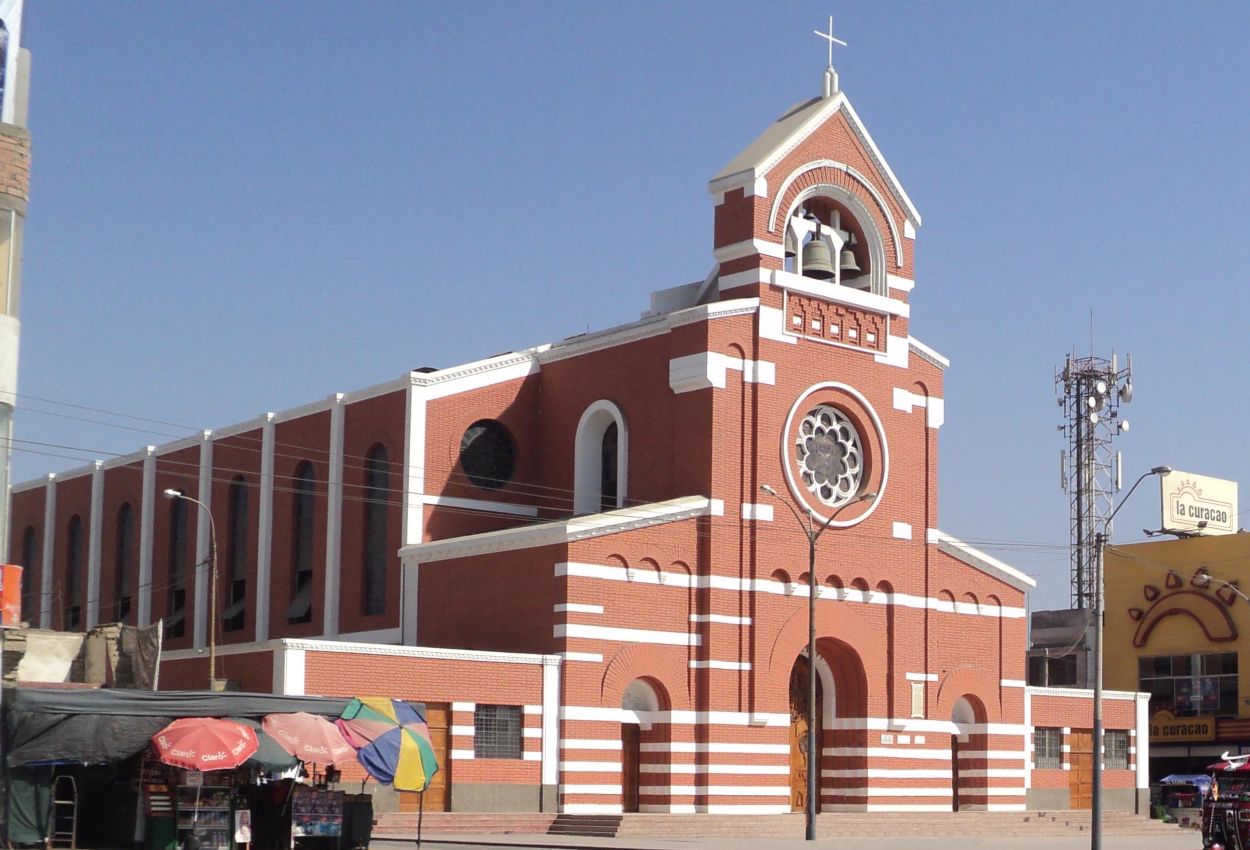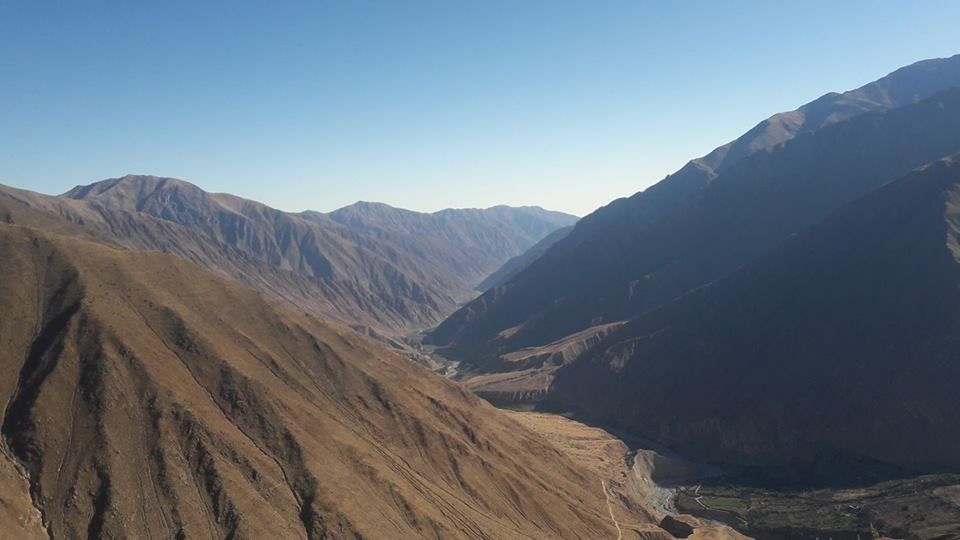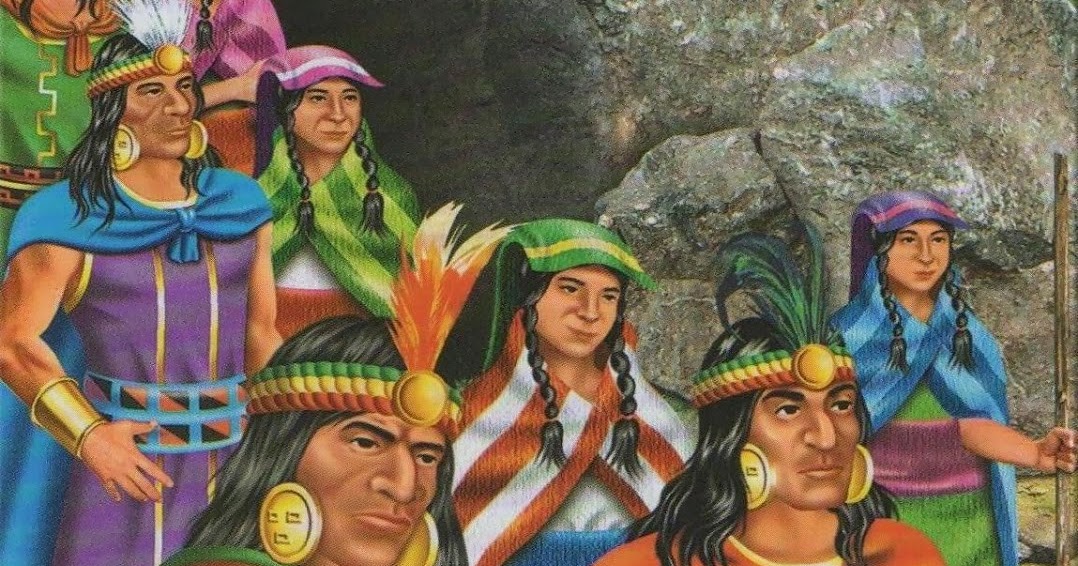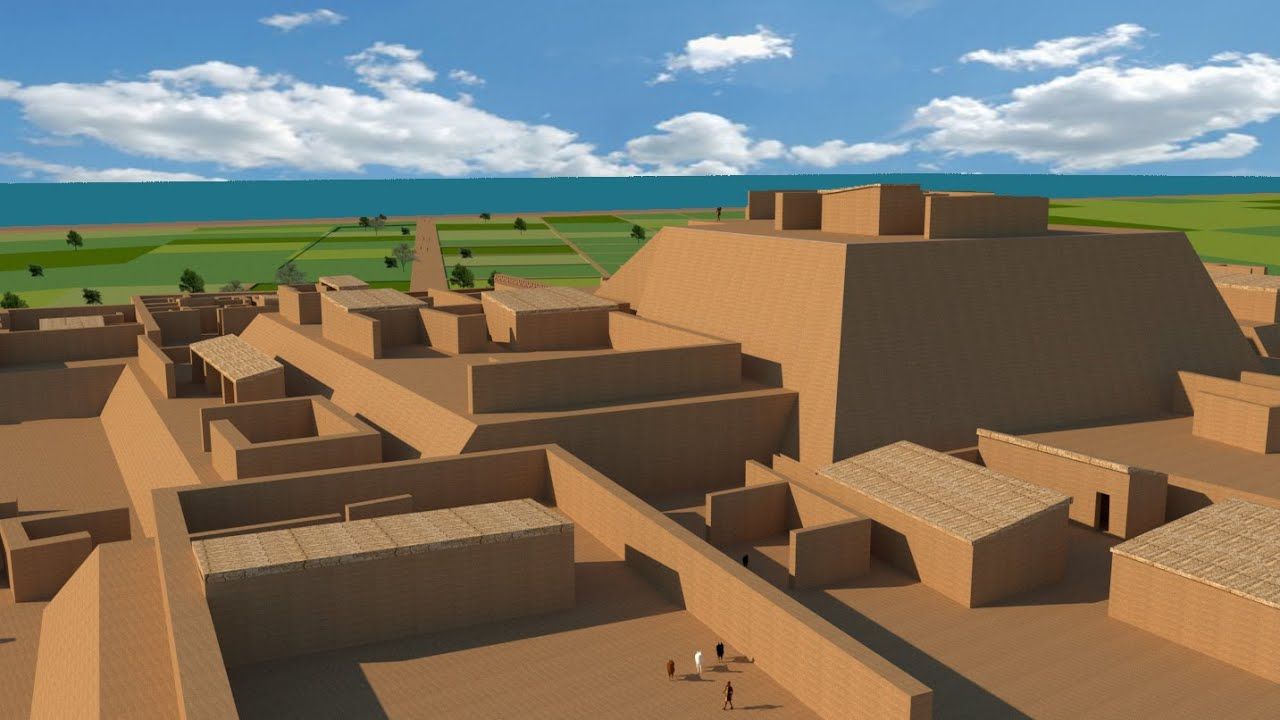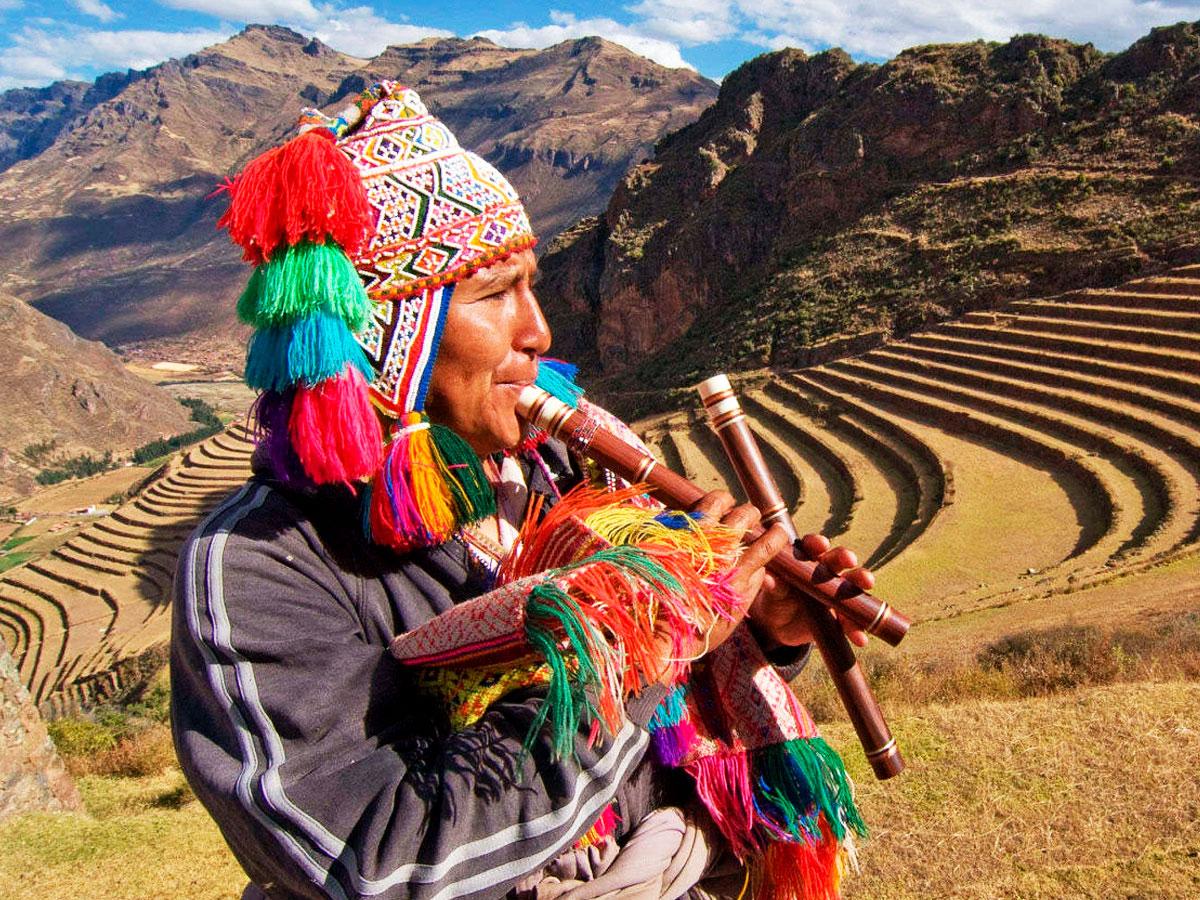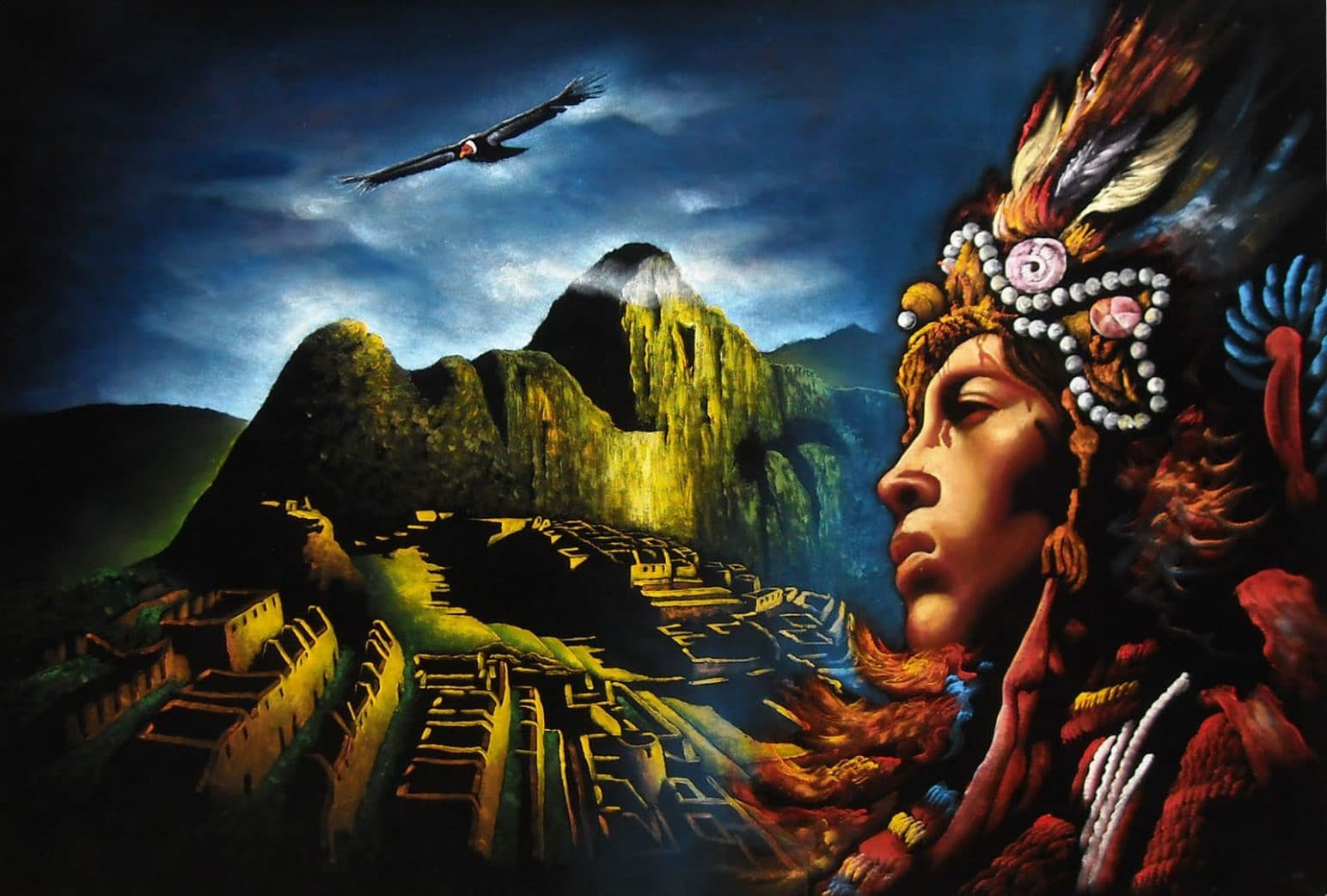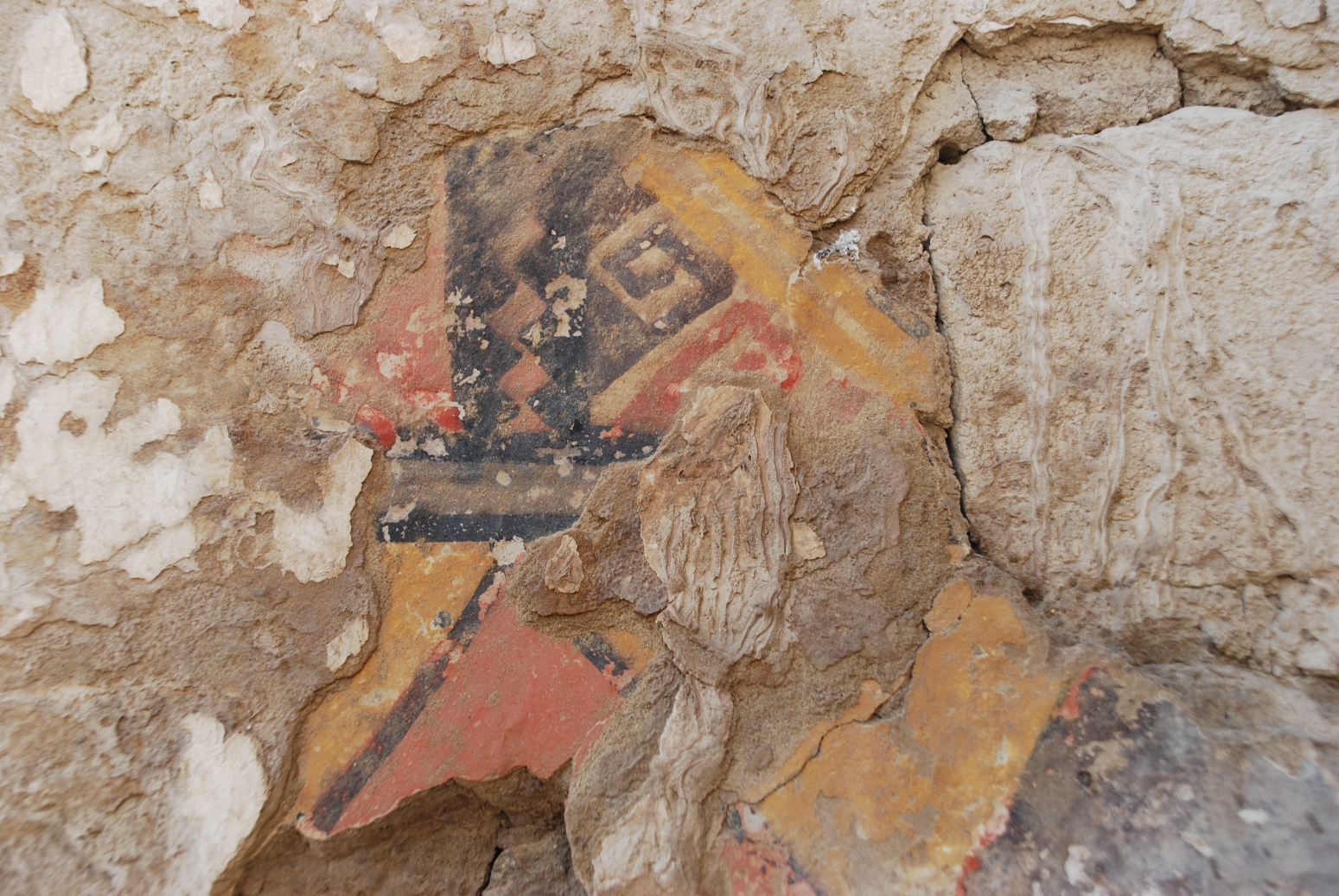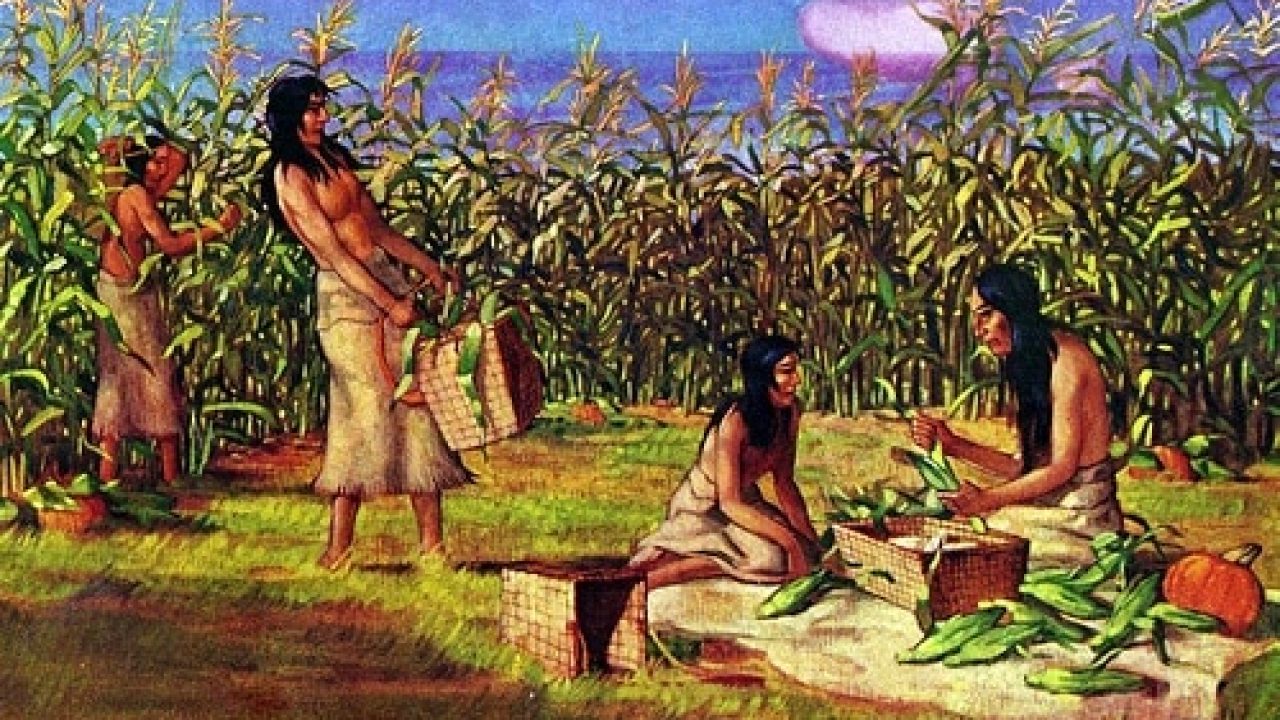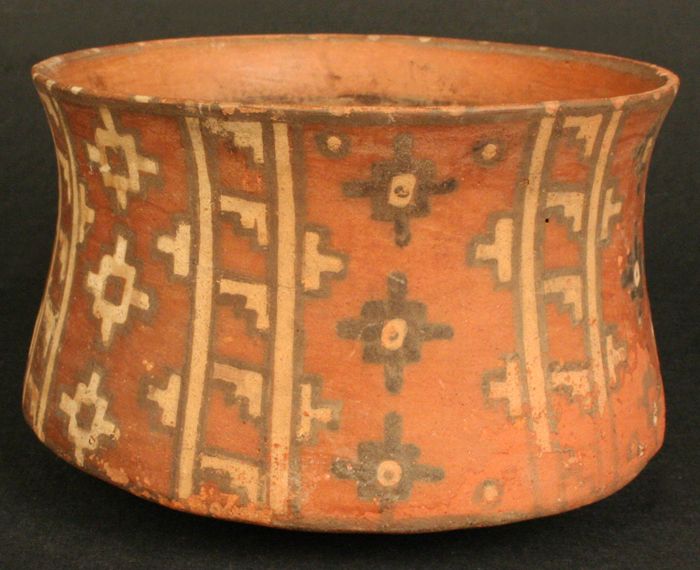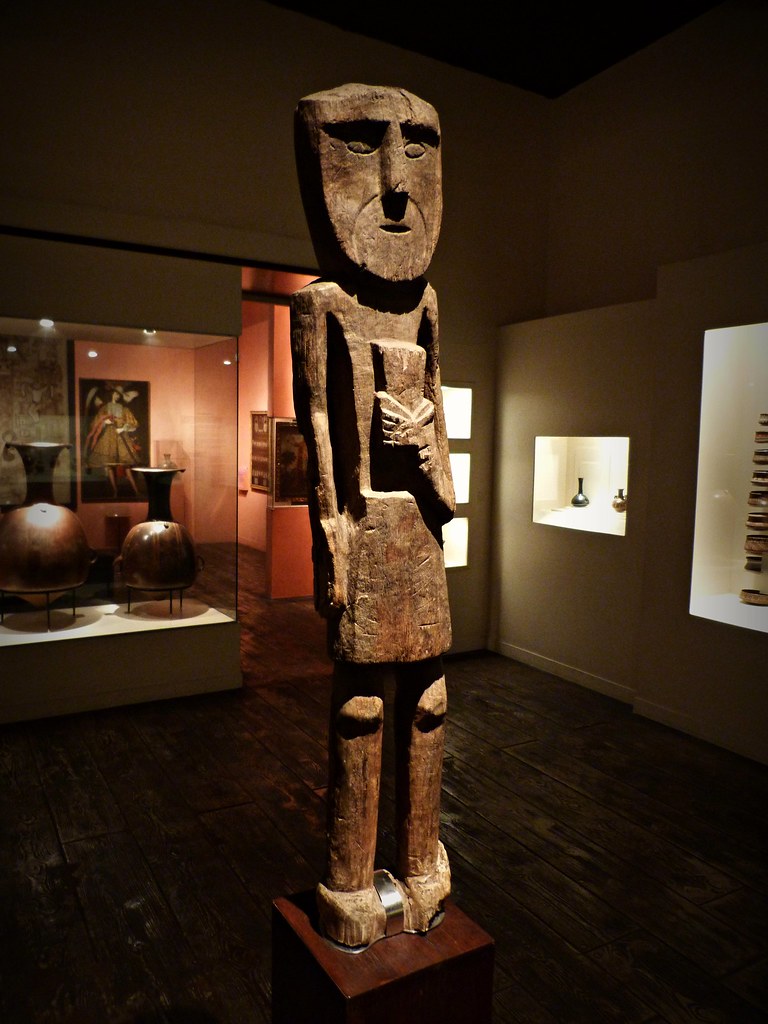A pre-Columbian civilization that lived in the southwestern region of present-day Peru, reaching its greatest development between 900 and 1450 after Christ, disappearing a few decades after the arrival of the Europeans. Learn all about the interesting Chincha Culture!
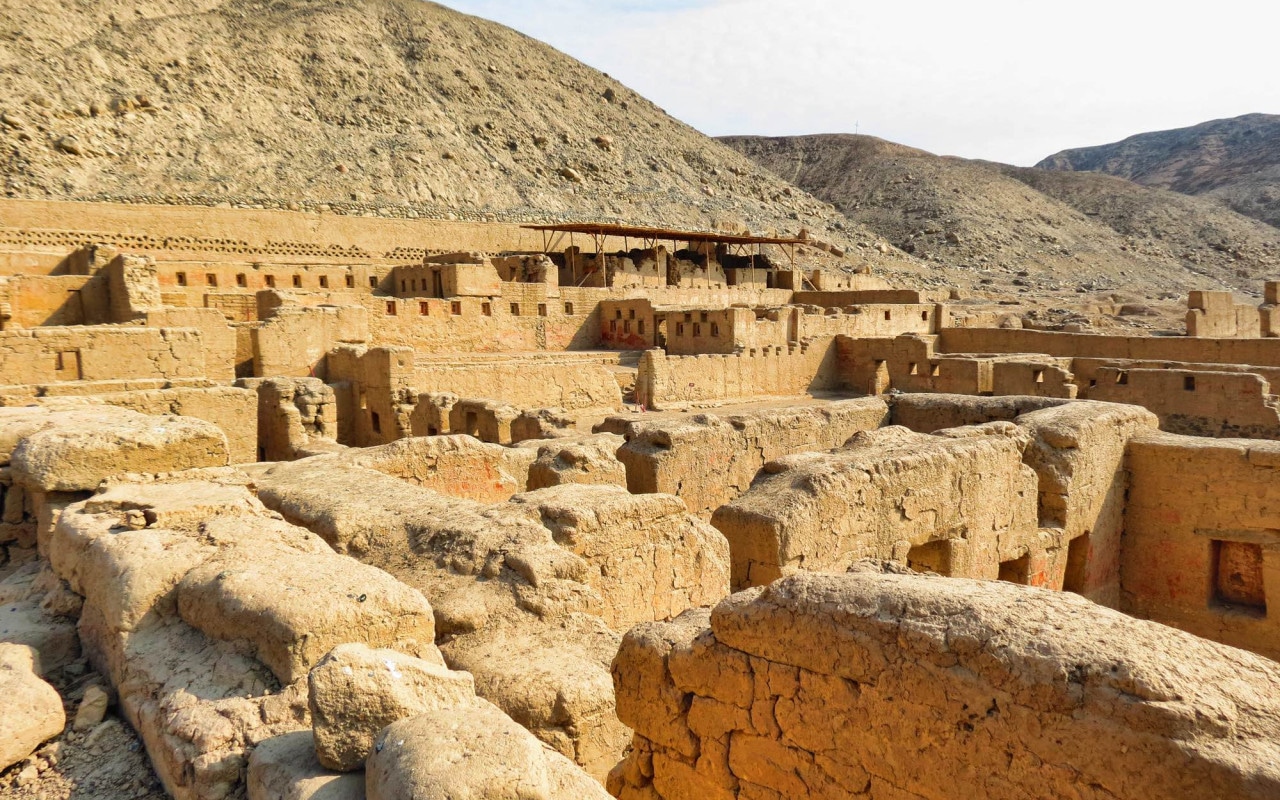
The Chincha culture
Chinchay or Chincha, is a Quechua term that translates as ocelot, although there are those who affirm that it is also related to the jaguar. The Chinchas are a native group of Peruvian lands, which were located near the Pacific Ocean in the southwest of the country.
This culture flourished in the so-called late intermediate period, which lasted between 900 and 1450 after Christ, as one of the regional states of pre-Columbian Peru, a product of the division of the political power of the Huari empire.
Around 1480 this culture became part of the Inca empire, which managed to spread throughout the region dominating more than two hundred cultures and nations.
The Chincha culture reached relevance as merchants on the high seas, taking advantage of the location of the lands they occupied, the great valley, fertile, productive lands with an excellent location. The most relevant archaeological remains related to the Chincha culture, is known as Sentinel and is located very close to the current city of Chincha Alta.
This society disappeared a few decades after the conquest of Peru by the Spanish, which began around 1532. This was due in large part to the diseases brought by foreigners, in addition to the chaos and anarchy produced by the invasion, which caused numerous deaths to the extinction of many of the original cultures.
Currently some areas and species of this South American nation are still reminiscent of this native culture, for example, the Chinchaysuyo region or the land of the jaguar, the Chincha Islands, three small islands in the southwest of Peru, the animal known as the chinchilla or little Chincha and for course the city of Chincha Alta.
History of the Chincha culture
The beginnings of the Chinchan people were in the largest valley of the current Peruvian nation, which bears their name. These lands, about 220 kilometers south of Lima, were extremely fertile, thanks to the presence of the strong waters of the Chincha River that flows from the Andes through the valley.
However, the bugs were not the first to live in this valley, whose lands were inhabited for about ten thousand years. Various cultures settled there, such as the Paracas, the Ica-Nazca and the Wari Empire. Between the XNUMXth and XNUMXth centuries, some changes took place in the valley, the cultures and their lifestyles changed, especially in the coastal regions, which would be known as the pre-Chincha culture.
The duration of this period was quite short, these cultures disappeared about a hundred years later, giving way to the Chincha culture, around the XNUMXth century.
Their customs, techniques and way of life were much more advanced and sophisticated than the previous ones considered pre-Chincha, they were also considered more bellicose, since they dominated the valley in its entirety, the same one that still has its name today.
El Chincha is one of the largest valleys on the Pacific Ocean coast of the Peruvian nation, surrounded by a desert where rain is practically non-existent, the fertility of the place is due to the presence of the Chincha River, which flows from the Andes ,
This territory measures approximately twenty-five kilometers from north to south along the coast, extending some twenty kilometers inland. It borders the valley of the Pisco River with a fairly similar extension and located about twenty-five kilometers to the south.
The extensive triangle-shaped valley has twenty-two thousand hectares of cultivated land today and it is presumed that in pre-Columbian times it was a similar amount. Next we will tell you a little more detailed about the history of this native culture:
Pre-Chincha stage
It is considered that some human beings inhabited the Peruvian coasts since ancient times, it is presumed that these areas have been inhabited for about ten thousand years.
Some of its first settlers survived from fishing, learning to exploit and live from the richness of the marine waters of the Humboldt Current. Later, the development of irrigated agriculture in the river valleys would be the activity to complement a fairly stable and comfortable stay.
It is estimated that the first known human settlements in the Chincha Valley date back to the year XNUMX BC and is known as the Paracas culture.
Around the year one hundred before Christ until the eight hundred after Christ, there is a greater influence in the valley of Chincha of the culture Ica-Nazca that developed mainly from the now department of Ica, but that included Chincha in the north, Arequipa in the south and the highlands of Ayacucho. It is affirmed that between the years five hundred and one thousand after Christ, the Chincha valley was controlled by the empire Wari, civilization that flourished in the Andean zone and conquered many empires and lordships of its time.
Between the XNUMXth and XNUMXth centuries, after the decline of the Waris, the different societies in the area presented notorious changes in their styles and cultural models, reorienting their lifestyle towards techniques and styles that appeared in this region of the Caribbean coast.
Everything indicates that this new style and the changes that have occurred are the result of a wave of migrations whose origin is not clear, which was called Pre-Chincha culture. Considered quite rudimentary, the pre-Chincha culture had, among its fundamental characteristics, a great deal of dependence on fishing activity and the collection of different products from the sea, such as shells.
Chincha Stage
Some investigations affirm that these pre-chincha settlements came from the Chavín culture, a society that flourished in the foothills of the Andean mountain range.
Around the Late Intermediate Period, an organized group was established in the Chincha Valley, which the Spanish chronicles call The Kingdom of Chincha. A more complex, structured and conflictive culture than the previous ones, which is attributed to the influence of different waves of migrations from the highlands.
It was a culture that managed to dominate the entire valley, especially due to its tendencies towards constant conflict, invasion and domination by other societies. They consider themselves descendants of the jaguar, this being one of the reasons for their penchant for war and conquest.
They developed important works of architecture and irrigation systems that favored agriculture. In addition, they got used to fertilizing the land for cultivation with dead animals, especially birds and guano, knowledge and techniques that later cultures inherited.
His ability to trade was also relevant, maintaining trade routes by land and water. They traveled the roads with herds of beasts of burden, to the areas of the Altiplano and Cusco.
Their navigation skills were improving and modernizing, they built rafts with large logs that could carry large loads and more than a dozen people. They implemented the use of sails that allowed them to navigate long distances, so their commercial destinations could extend to Central America.
The Chincha seafarers venerated a star that they gave the name of Chungui and that was presumably a reference for navigation.
The Sentinel or chinchaycamac, currently in ruins, was a large-scale construction that extended about 75 hectares and exhibits two large pyramids known as La Centinela and Tambo de Mora.
These colossal structures were built in adobe, a kind of brick made from a mass of mud and straw, which is then dried in the sun. These pieces are fixed together with clay, allowing walls, facades, houses and in this case pyramids to be erected.
The pyramids were residences of the rulers of the Chincha people and around them the area where the different artisans lived, in charge of the pieces of silver, wood, ceramics and the different textiles. However, it is presumed that, as in most pre-Columbian cultures, the Sentinel had more of a ceremonial and religious purpose than a residential one.
There was a whole network of roads and highways, which started from La Centinela, to the south and east in a straight line. These allowed access to other ceremonial centers and also transport merchandise to the Paracas valley and the highlands of the Andes, this means that many of these roads, still visible, go about twenty kilometers from their point of origin.
Some of the Spanish chronicles state that the population of Chincha exceeds one hundred thousand people, which was distributed among heads of households, of whom it is estimated that some twelve thousand were farmers, some ten thousand dedicated to fishing and more than six thousand merchants. among other professions or trades.
These numbers reflect the importance of production from land and sea, in addition to trade, for its economy. Many inhabitants subsisted thanks to these activities, while maintaining a flourishing empire at that time. This culture, like other societies in the Andean region, used money for commercial activities.
The influence of the Incas
Much of the information reflected in the Spanish chronicles was collected from natives of the area, sometimes being a bit contradictory. However, they allowed to know in general terms the history and a little the development of the Chincha culture.
They describe the Chinchas as a "great province, esteemed in antiquity... splendid and grandiose... so famous throughout Peru, that many natives fear it."
Between the XNUMXth and XNUMXth century when this culture began to spread along the Peruvian coasts and into the Andes, the Incas were establishing their mighty empire as well.
The Chincha dominated maritime trade, covering long and productive routes, negotiating luxurious pieces of great value made of gold and silver, generally. Trips that covered the Pacific coast from the southern part of Colombia to the northern part of Chile, with the possibility that they reached Mexico. The first expedition of which there are records, of the Inca representatives to the Chincha empire, was headed by the military leader Cápac Yupanqui, brother of the emperor Pachacuti who ruled between 1438 and 1471.
The expedition had the intention of establishing a peaceful and friendly contact, not an invasion or conquest, they delivered valuable gifts from their monarch and informed their neighbors that they should only accept the Inca superiority and power, to keep their peaceful life intact.
The Chinchas did not hesitate to accept the requests and were able to continue their existence as they had, without problems with their neighbors. However, around the year 1471, when the Inca monarch Topa Inca Yupanqui began to rule, the Chincha empire was practically annexed to the Inca Kingdom.
However, the Chincha leaders maintained a certain political and economic autonomy and leadership over their people. Due to these provisions, the monarch of the Chincha culture spent several months a year in the courts of the neighboring emperor, where he was treated like the Inca nobles.
The ruler of Chincha, had privileges that many in the entourage of the Inca Chief did not have, he was considered a friend of the emperor and lord of the lowlands, he exhibited great wealth, so much so that he was confused with the Inca emperor Atahualpa in the meeting with Francisco Pizarro and the conquerors. In the Battle of Cajamarca he was killed and Atahualpa captured by the Europeans.
The Inca-Chincha relationship was close, the latter were allies of the Atahualpa faction during the civil war of this important culture.
On the other hand, the Incas favored the control of the Chinchas over their lands, maintaining the management and influence of maritime trade. The Incas invaded, dismantled and dominated the culture and economy of the Chimú, settled in the north of the Peruvian lands around 1470, giving control of this commercial area to the Chinchas. These lands, very close to the Inca territories in the highlands, allowed a very convenient passage, to access other commercial routes and therefore a greater scope of their activities.
Spanish conquest
The Chincha Valley, fertile and prosperous, was discovered by the conquerors in 1534, and the first Roman Catholic Dominican mission was founded in those lands around 1542.
As in most indigenous territories, the arrival of the Spaniards in Chincha represented death and extinction. The inhabitants of this powerful empire were affected by the chaos and anarchy represented by this foreign power that came to impose itself and that brought with it, in addition to excessive ambition, many diseases that decimated the natives.
Researchers estimate that ninety-nine percent of the indigenous belonging to this culture disappeared in the first eighty years of Spanish colonization and rule, so this powerful kingdom never recovered.
Social organization
Chincha society was hierarchical and it is presumed that it had militaristic tendencies. It was divided into social classes that were governed by a lord or chinchaycamac. Their system of government is therefore known as manor, where the chinchaycamac, organizes, directs and decides the destiny of the citizens of their societies.
Language
There are some theories that indicate that the Quechua language comes from the Chincha culture, which settled in the Andes and the coastal area of Peru and Ecuador.
Others, on the contrary, affirm that it was born in the central areas of Peru, spreading thanks to commercial activity and being adopted by other cultures, including the Chincha culture. These in turn spread it to many other areas that were within their trade route. It is possible that the Chinchas spoke a dialect of Quechua, known as Iy Yunkai Quechua.
Religion
The Chincha culture, like almost all pre-Columbian cultures, were polytheistic and felt respect and veneration for the forces of nature. Its main deity was Chinchaycámac, however no representation of it is observed.
Economy
The Chincha economy is centered on agricultural, fishing and commercial activities. They covered extensive trade routes, thanks to a network of roads that covered the valley and extended beyond its limits. However, even more surprising was the maritime trade, the trade routes were much more important than the land ones.
Their navigation techniques and methods, together with the technology they developed, allowed them to cover long routes to the north and south, reaching Central America, where the shells of Spondylus were found in some excavations, a mollusk native to Ecuador and Peru, whose shell was used for jewelry, accessories, funerary ornaments, etc.
This indicates the possibility of a route for the commercialization of Spondylus through the Pacific and that included cities from Michoacán (Mexico), Central America, Colombia and Ecuador, reaching Peruvian lands.
They also award the so-called commercial triangle that includes the Collao plateau, the central coast of the Peruvian territory and the northern zone of the Ecuadorian nation. Traded products include dried meat, wool. metals etc Their commercial influence extended to Inca territories, long before they were allies.
In terms of agriculture, they developed many skills and technologies, innovative cultivation and irrigation systems. They prepared the land for planting, fertilizing it with guano, a substrate that originates from the accumulation of droppings from bats, birds and seals, also with a mixture of soil and dead animals.
Artistic expressions and technology
When they settled in the valley, the chinchas developed many rich and varied techniques and skills, such is the case of their works of architecture, ceramics, navigation, etc.
Navigation related
They were characterized by being great navigators and developing many techniques that made it safer. They also designed and built large boats with sails. Each boat carried about twenty people, plus cargo. It is claimed that these seafarers reached parts of Central America as part of their trade routes.
Ceramics
The ceramic samples from the Chincha culture maintain their influence from the Nazca culture, especially in the use of colors to decorate and geometric shapes, very similar to that of textiles. They also have a certain Wari and Inca influence, which demonstrates the constant relationship of the coastal communities with those that inhabit the central Peruvian highlands and surrounding areas.
The pieces are frequently painted with black and carmine red tones, displaying geometric designs, rhombuses, zig-zag, circles, organized in stripes. Some were decorated with drawings of animals, generally felines or birds, but this was not very common.
The vessels, especially those for ceremonial use, were thick, somewhat crude, and had a wide mouth extended outwards.
Some pieces were also decorated with some shapes and forms of strange animals with four legs with some resemblance to a dog or cat and others similar to the shape of a bird with a curved beak.
The style of Chincha pottery influenced neighboring cultures, for example, in Cañete pottery it is very common to see something of the style. According to the collections found in the excavations carried out in different areas of the valley, for example, in Tambo de Mora, Chincha ceramics are separated into two stages:
- I Chincha-later, where there is no relationship or influence with the style of the Incas.
- II Chincha-later, associated or influenced in some way with the forms of the Incas.
All the pieces prior to these stages are known as Proto-Chincha, that is, before the Chinchas or before the Chinchas.
Architecture
The Chincha culture, like some others along the Peruvian coastal zone, used adobe for their architectural structures, which are located mainly towards the valleys of Chincha, Tambo de Mora, Lurincincha and San Pedro, areas that housed the centers important administrative and ceremonial
Its main center and architectural sample was called Huaca La Centinela, a settlement where thousands of natives lived and from where the network of roads and highways that extended throughout the valley and beyond, between the years 900 and 1450 after Christ.
Made of adobe on an imposing platform, the great pyramid called the Sentinel was the place where the chincha leaders lived, as well as being a ceremonial center, surrounded by other smaller pyramids, but just as imposing, separated by walls and narrow passageways.
These structures were the palaces of the Chincha nobles and were made up of superimposed platforms, the upper ones being the rooms and the important patios. At its feet lay a large residential area where natives of different trades: farmers, artisans, fishermen, etc., spent their days.
Sculpture
It is very common to make wooden figures that are decorated with different ornaments, generally for ship rudders, oars or tools for working the land.
There are pieces that still retain the colors, red, green, blue, yellow, purple tones, among others. For example some oars, very elaborate that measure between one and two meters. The carving is done in a single piece of wood, clearly showing three parts.
- Shovel: with a rectangular, flat and smooth shape, they rarely have carvings or reliefs.
- Handle and finial: they are carved or openwork, with delicate and meticulous figures of people, animals such as birds and fish, and geometric shapes. There are some oars that have some shells and other embedded ornaments.
In addition, there are small human figures and disproportionate heads, similar to the carvings of oars, these are generally flat, they do not have a greater volume.
Some pieces, which are presumed to be poles used for some constructions intended for religious ceremonies, present a carved figure at the end of the bar, a being with human characteristics, as well as the pitchforks, trunks or Y-shaped sticks that serve to support branches. , slats, etc and that they were also carved with faces.
textiles
They worked mainly with cotton, with some Nazca and Paraca influence, they made fine, delicate and complex pieces. The designs and colors similar to those used in ceramics stand out, generally geometric, human and zoomorphic.
Discovery and study of the Chincha culture
During the process of Spanish conquest and colonization of Peruvian lands, European chroniclers left information about some cultures, including the Chincha. Some of the writings name an empire in the valley area and a monarch who was present in Cajamarca, where the Inca emperor, Atahualpa, was captured and executed.
However, the interest in the study of this society that the chroniclers mentioned, appears when the German archaeologist Max Uhle, who organized several expeditions through America, carried out some excavations in that area and found samples that aroused interest in studying that culture. pre-Columbian
Initially considered as proto-archaeology, they were the first studies of the native cultures in Peru that were put into action by different groups of individuals who had a special interest in the antiquities of the original cultures, between the XNUMXth and XNUMXth centuries.
The expeditionary groups in many cases were made up of civilians, religious and military, who sought to investigate and approach these cultures, with the intention of knowing and studying them, considering themselves the pioneers of archeology in Peru.
The pieces found thanks to the excavations were observed and a graphic representation, illustrations and freehand drawings were made, complemented with descriptions.
Towards the XNUMXth century, most were led by enlightened people from the old continent, interested not only in botany and geography, but also in antiquities and other types of more universal subjects.
Such interest led them to enter remote areas, such as the Andean mountain range, desert areas, valleys and plateaus of the Peruvian territory.
We suggest some links from our blog, which may be of interest to you:
